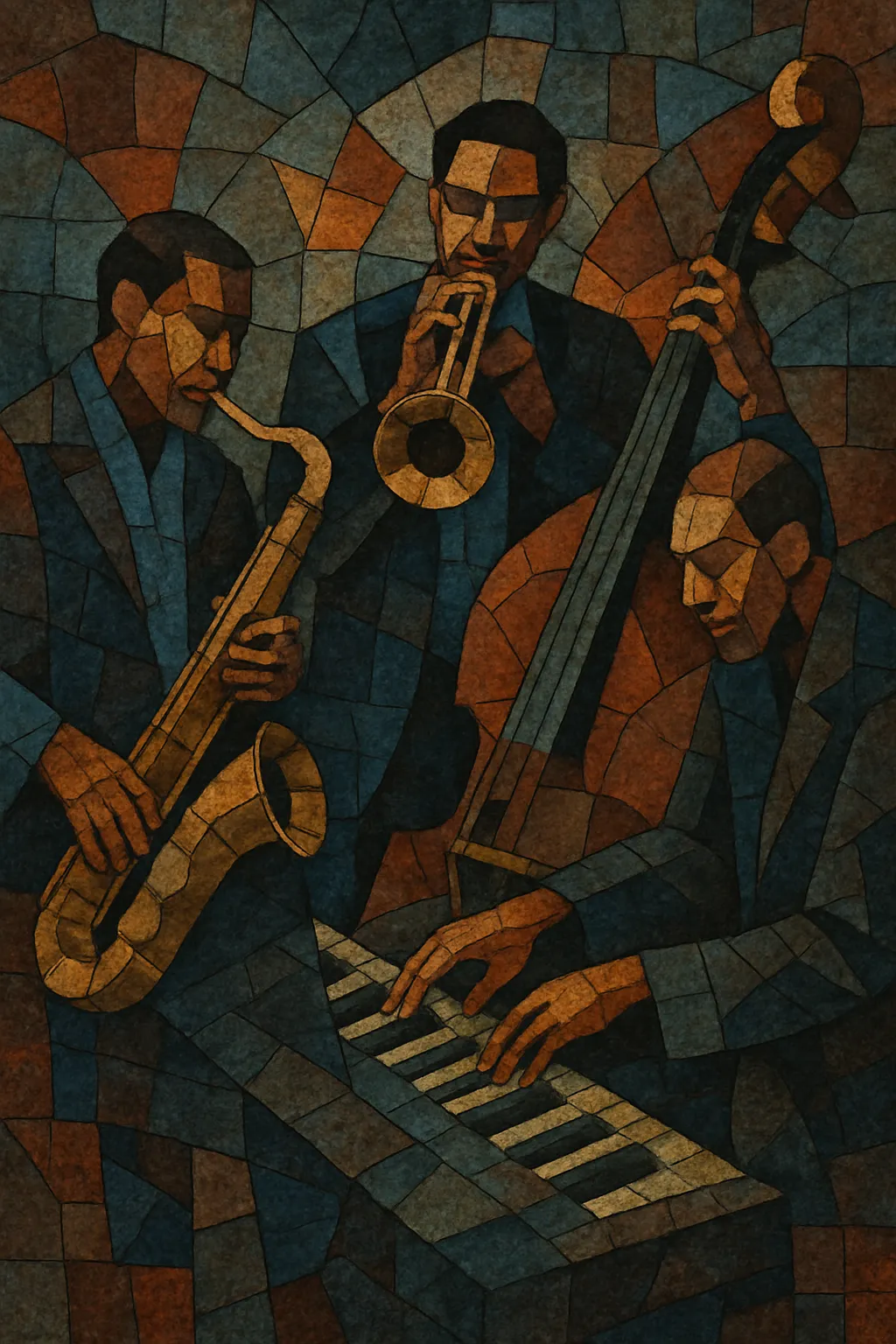Post-bop is a modern jazz style that emerged in the early-to-mid 1960s as a synthesis of bebop, hard bop, modal jazz, cool jazz, third stream ideas, and the experimental impulses of the avant‑garde.
It typically features acoustic small ensembles (often trumpet, saxophone, piano, bass, and drums) interacting with highly flexible time, non-functional or modal harmony, and motivic development rather than relying strictly on bebop chord cycles.
Its sound balances structure and freedom: forms are clearly composed and often intricate, but improvisers stretch time feels, reharmonize on the fly, and use advanced harmonic colors such as quartal voicings, pedal points, and chromatic planing.
Canonical touchstones include Miles Davis’s mid‑’60s Second Great Quintet (e.g., E.S.P., Nefertiti), Wayne Shorter’s Speak No Evil, Herbie Hancock’s Maiden Voyage, Andrew Hill’s Point of Departure, and many mid‑’60s Blue Note recordings that pushed beyond hard bop.
Post-bop crystallized in the early 1960s in the United States, especially through the work of Miles Davis’s Second Great Quintet (Miles Davis, Wayne Shorter, Herbie Hancock, Ron Carter, Tony Williams). These musicians fused bebop’s linear language and hard bop’s drive with modal harmony, cool-jazz subtlety, and avant‑garde rhythmic freedom. The approach emphasized interactive rhythm-section playing, blurred bar-lines, and compositions that used unusual forms, pedal points, or non-functional harmonic motion.
Labels such as Blue Note documented a wave of composers and bandleaders—Wayne Shorter, Andrew Hill, Herbie Hancock, Joe Henderson, Freddie Hubbard—who defined the idiom. Albums like Speak No Evil, Maiden Voyage, Point of Departure, and Mode for Joe showcased sophisticated writing, motivic cohesion, and harmonically open solo spaces. Drummers like Tony Williams and Elvin Jones expanded the ride-cymbal pulse into fluid, polyrhythmic textures, encouraging soloists to phrase more freely.
Post-bop absorbed lessons from modal jazz (tonal centers and static harmony) and from the avant-garde (timbral exploration and flexible form) without abandoning structure. While contemporaries such as Ornette Coleman and John Coltrane were pushing free directions, post-bop maintained composed heads and clear ensemble roles, creating a middle path between tradition and experimentation.
Through the 1970s, many post-bop players moved into electric jazz fusion and jazz rock, carrying over the harmonic and rhythmic sophistication of post-bop into amplified contexts. In subsequent decades, its language underpinned modern creative jazz, spiritual jazz revivals, and a great deal of contemporary small‑group jazz. Its harmonic palette and rhythmic interplay have also been sampled or referenced in jazz rap and informed the compositional approach of nu jazz.
Use an acoustic small ensemble—commonly trumpet, tenor or soprano saxophone, piano, double bass, and drum kit. Encourage conversational playing: the drums and bass do more than keep time; they shape phrases, create tension with metric modulations, and respond dynamically to the soloist.
Favor modal centers, non-functional progressions, and ambiguous key areas over strict II–V–I cycles. Employ quartal/quintal voicings, upper-structure triads, pedal points, and planing (parallel) movement to blur tonality. Draw on scales such as Dorian, Lydian, altered, whole‑tone, and diminished. Use occasional rapid key shifts or symmetrical movements (e.g., major-third cycles) to add modern color.
Adopt a flexible, “broken” swing feel where the ride pattern breathes and bar-lines feel porous. Incorporate polyrhythms, implied metric modulation, and off‑kilter accents from the drums and piano comping. Allow the groove to morph between straight‑eighth textures and swinging subdivisions as the solo develops.
Write memorable, often motivic heads that can be deconstructed in solos. Try asymmetric forms (e.g., 10 or 14 bars), interludes, or vamp-to-form designs (pedal vamp into a contrasting bridge). Contrast static modal sections with harmonically mobile episodes. Leave space for collective improvisation or trading between rhythm section and horns.
Develop a motif and transform it rhythmically, intervallically, and registrally across the form. Mix linear bebop vocabulary with modal scalar shapes and outside approaches (chromatic side‑slipping, triad pairs, and tension-release over pedals). Aim for narrative pacing: begin inside, stretch outside as tension builds, then resolve with thematic callbacks.
Favor an intimate, live room sound with clear cymbal definition and present bass. Rehearse dynamic cues (drops, crescendos, drum fills) and codas that can adapt on the bandstand. Encourage each player to listen and react; the genre’s essence is interactive spontaneity within a composed framework.


